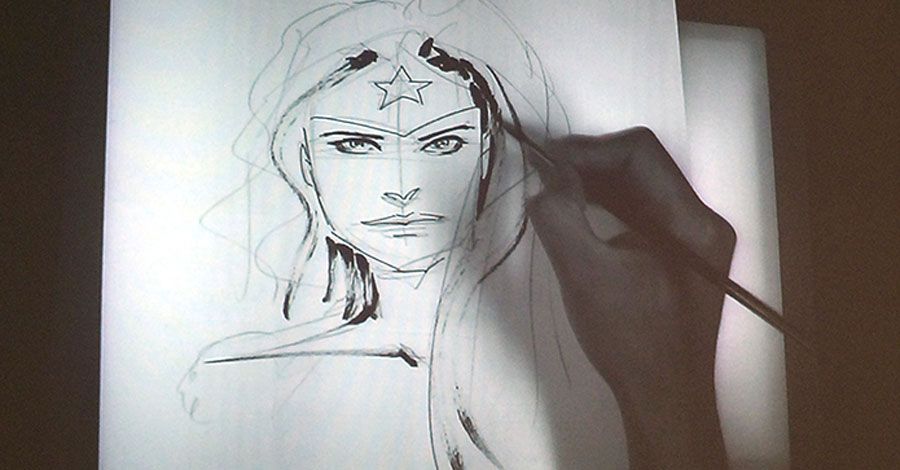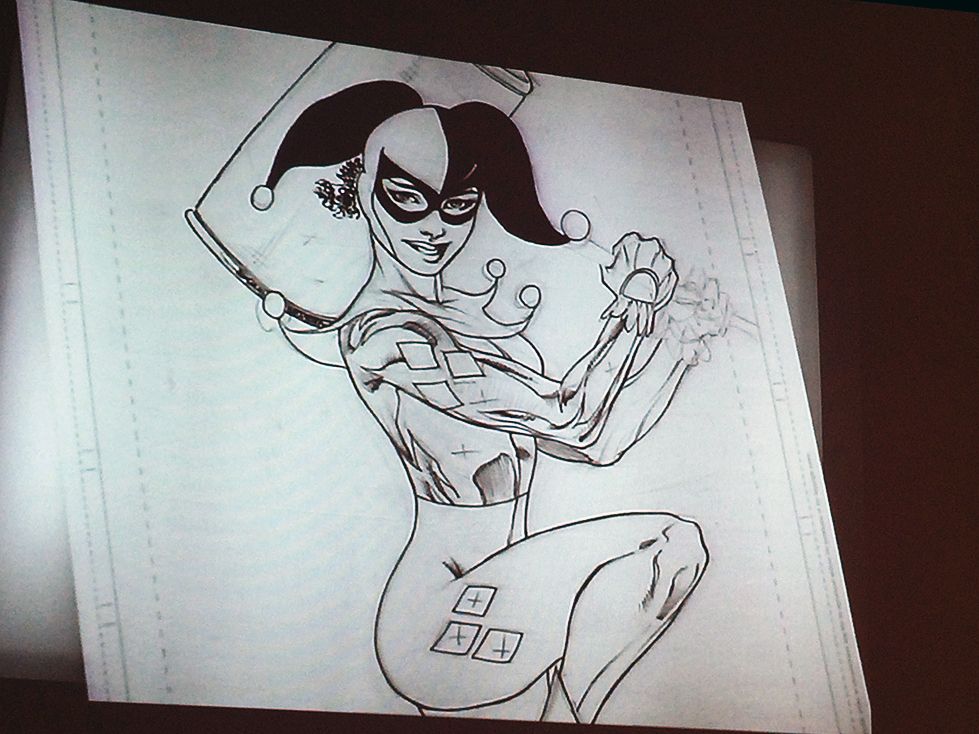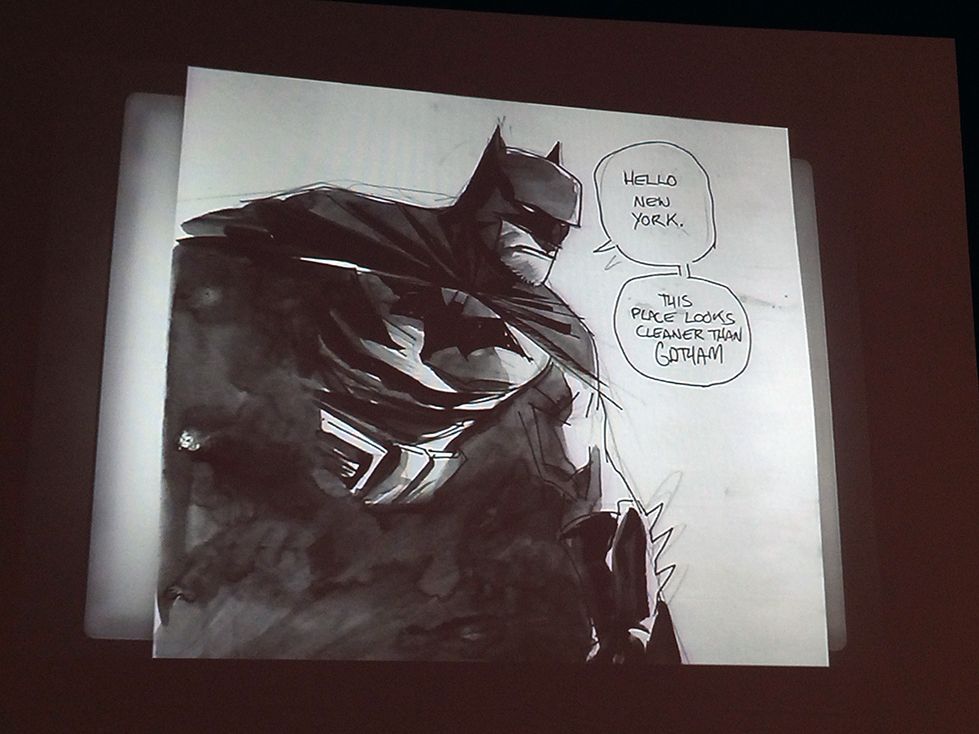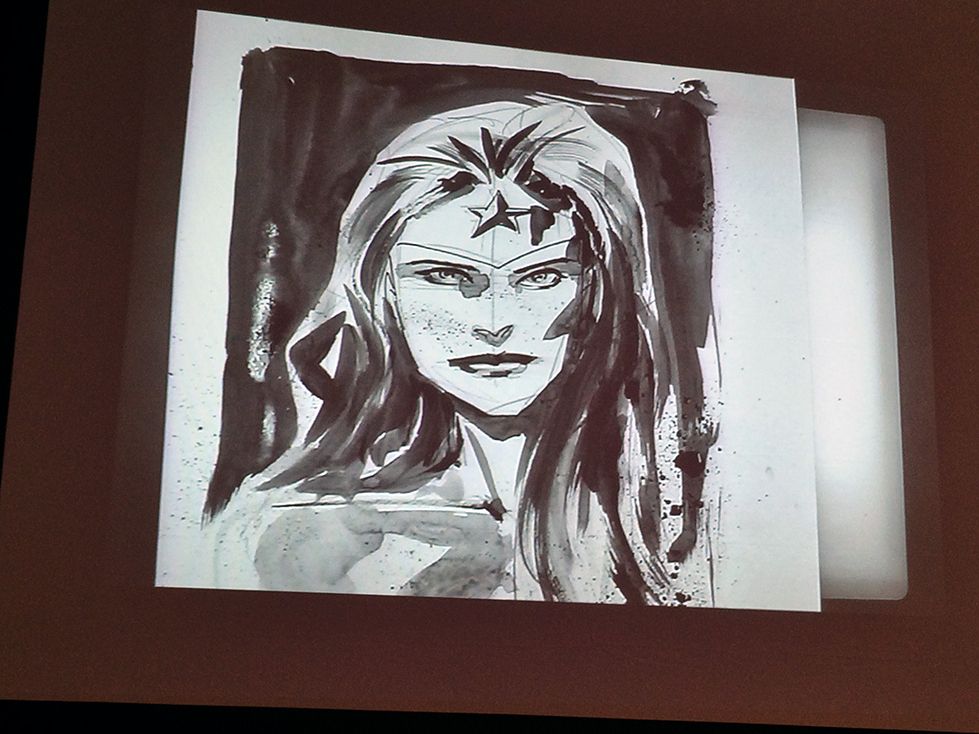As the first panel on the first day of the first ever Special Edition NYC convention, the DC Comics: Art Masters panel might just have a very specific place in New York comic book history. The panel got off to a pretty relaxed start as the crowd slowly filed in after trekking across the large Javits Center, taking seats in the large panel room as a group of staffers tried to get the essential Elmo overheard projector to work.
Moderator Larry Ganem from DC Entertainment kicked off the panel on time, with "Superman/Wonder Woman" penciler Tony Daniel and "Justice League" inker Joe Prado seated next to him behind the not-yet-functional Elmo machine. To make good use of the Elmo repair time, Ganem got the panel started by asking where both Daniel and Prado got their starts.
"When did I start getting paid?" asked Daniel. "I started with 'The Elementals,' which was a run by a company called Comico in Chicago. I did a few issues of 'The Elementals,' kind of a cult classic. It was great for me because I actually got paid to practice, because I considered it practice. The books weren't really being published because, whatever, and there was some kind of dispute with Diamond or something and they wouldn't print the books. They published it several years after I drew them, so I was just drawing books that weren't getting printed and I was getting paid to practice."
Prado revealed an issue of John Byrne's "Fantastic Four" got him interested in comics in either 1982 or 1983, saying that actually working in comics felt like a distant dream to him as a kid in Brazil. "Back then in the '80s, it was like a distant dream for us. Living in a third world country and not being able to communicate and stuff like that, it was difficult." Prado commented on how much things have changed since then, remarking that there are a "ton" of Brazilians now working for DC Comics.
With the Elmo machine now up and running, Tony Daniel whipped out a pencil sketch he had been working on of Harley Quinn. After placing the sketch on the machine for the growing audience to see, he talked a little bit about his process. Daniel said that he likes to save to draw finer details like the hands until the last, just so he won't have to repeat drawing them should larger portions of the image change. As Prado stepped in to begin inking Daniel's drawing - his first time working with the penciler -- he demonstrated that he starts his inking process with the face and eyes.
At this point, the panel's third guest, "Flash" and "Detective Comics" artist Francis Manapul arrived to a round of applause. Manapul quickly put pen to paper as Ganem continued asking questions. Tony Daniel talked about the process of handing his pencils off to an inker, stating that he only knows that a page is done when it's time to drop it off for FedEx.
"Every day is a deadline and luckily for me I have until 9 o'clock to get my work to FedEx," explained Daniel. "I don't call FedEx everyday, but they're basically my timer. When things are going well I'm trying to get the work out to the inker, because he's waiting for pages and I can't have him waiting forever. So I try to get [the page] as clear as possible for him. Luckily, the inkers that I work with know how to determine what a little sketchy line might mean."
"I think that every inker has to know how to draw," Prado added while inking Daniel's Harley Quinn sketch. "You have to be a good artist, but not [specifically] a penciler. You have to be a finisher. In the '70s, they called inkers 'embellishers.' That was really important."
At this point, Manapul shows off a nearly completed Batman sketch that he drew in approximately six minutes; the Dark Knight has a speech balloon saying, "Hello New York." Considering how quickly Manapul was able to knock that sketch out, Ganem asks the panelists about how long it takes for them to complete a page. Prado and Daniel both say that they can respectively ink and pencil a page in a day. "Occasionally I can do two pages, if it's like Superman just by himself, just floating in space."
As someone who often works with watercolor and handles the most all of the art duties himself, Manapul's process was a bit different. "My pencils are really rough, so I could probably maybe get four pages of pencils done a day. It's one of those things where only I can ink it, unless you have someone like Joe who's a finisher, but then he'd probably have to do most of the work, because it is pretty rough. The way I pencil is almost kind of old school. I could comfortably finish a page a day. I think I average inking about two pages a day."
Manapul took over control of the Elmo machine next, placing a blank piece of paper down for the audience to see. He then started a headshot of Wonder Woman, which prompted a question about drawing hair. "Hair is the best part," Manapul commented. "I can just go like 'wheeee,'" he exclaimed while dragging his brush effortlessly across the page, adding a new wild strain of hair on the heroine's head. "The wilder it is the better. I'm able to get these really nice brush strokes for it. This isn't something I would normally get to do with the other characters that I handle. Hair is fun."
"It's the most fun part," added Prado. "We're hair designers."
Manapul finished up his Wonder Woman piece by adding a few of his signature ink splats to the page, which he said he does because it's relatively effortless and looks cool. The attention then turned to the panel audience, which had silently reached capacity. Moderator Ganem asked those in attendance trivia questions about the panel, rewarding those with correct answers with the sketches that Daniel, Prado and Manapul had both completed on stage and brought with them. Even if only a few attendees walked away with original art, everyone left with a greater understanding of the work that goes into making comics.




